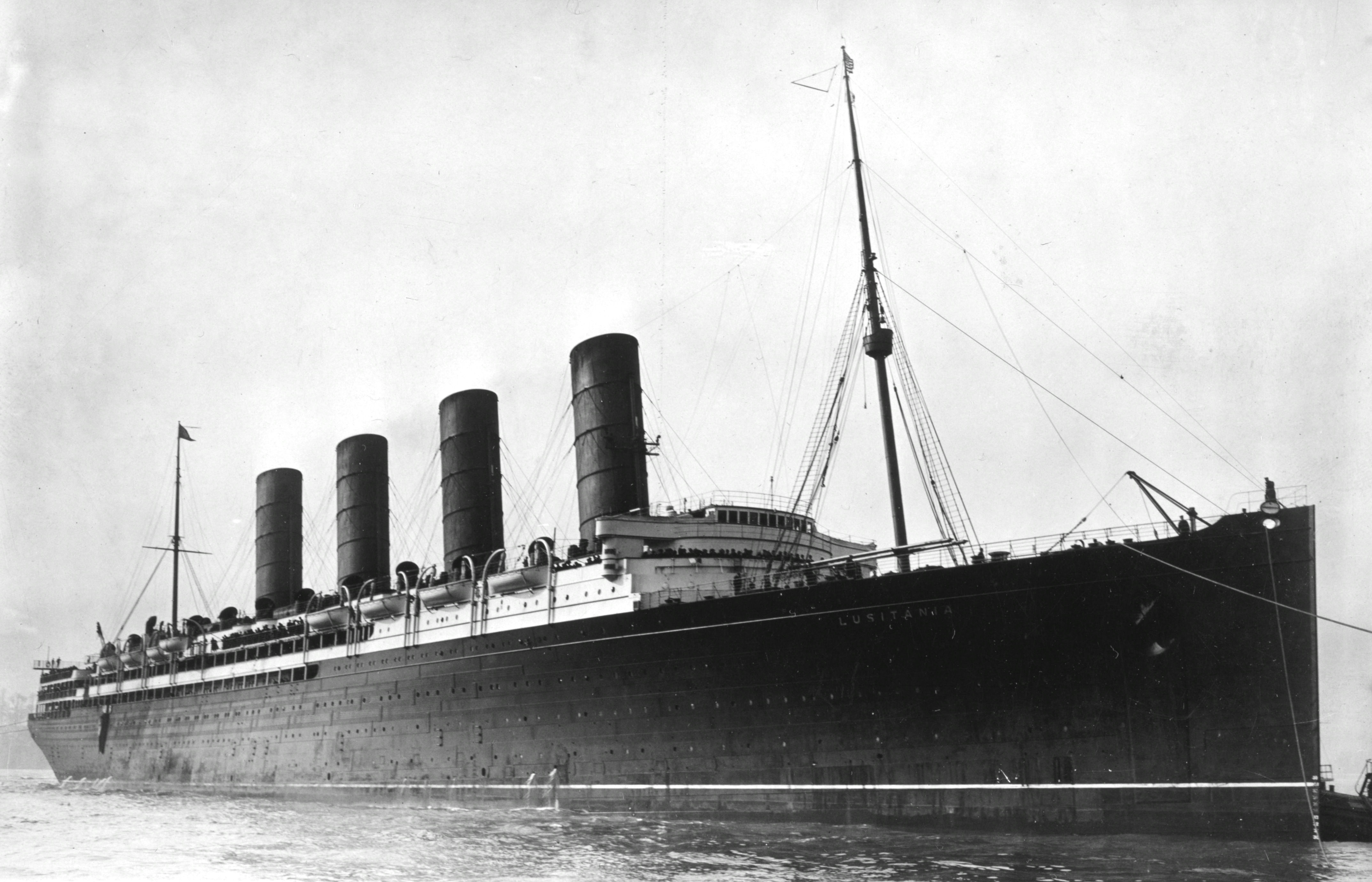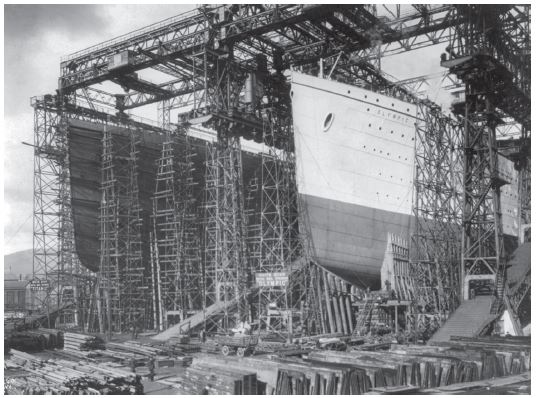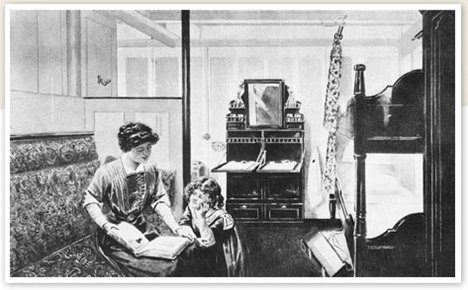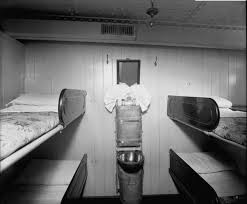Making the Titanic
Competition
From 1870 to 1914, during the peak of immigration to the United States from Europe, steamships were the only form of transportation across the sea. As steamship design improved, a trip across the Atlantic shrunk to a week.
Shipping companies competed to commission the best ships on the waters. Titanic's builder, White Star Line, had a rivalry with Cunard Line, which commissioned two new ships known as the fastest liners in the North Atlantic. Such competition rushed the Titanic's construction.

Lusitania, one of Cunard Line's ships (Red FM)
Ship
The Titanic was the world's largest man-made object of its time. It was 882 feet long. The ship had room for 2,435 passengers and 900 crew members. The Titanic was built over a span of three years.
Titanic required three million rivets. Steel rivets had to be fitted using a hydraulic machine that couldn't work on curved parts of the ship. Weaker, wrought-iron rivets had to be fitted by hand.

(Arcadia Publishing)
"From the very day that she was designed she was almost doomed…this [the use of iron rivets] was almost the Achilles heel of the Titanic."
~Paul Louden-Brown, White Star Line Archivist
Classes
First class:
thick carpets
fancy furniture and paintings
library, pool, and gym
Second class:
dining room, library, and deck
less opulent
Third class:
lowest part of the ship
shared cabins
room to sit, dance, and listen to music

(Ultimate Titanic)

(Maude Sincock Roberts: Titanic Survivor)

(Thinglink)
The Fatal Miscommunication